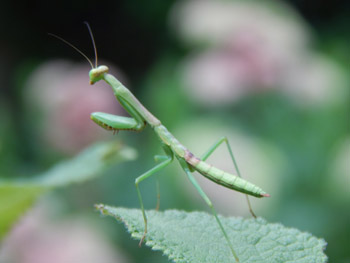 Lake Robinson is surrounded by beautiful natural areas including rocky forests with walking trails, swamps, creeks and streams, open fields, smaller lakes, and the Blue Ridge Mountains. These natural spaces surrounding the lake are filled with a very large diversity of native plant species. With all of these different natural areas in such a close proximity to each other, it is not surprising that Lake Robinson has become, and will continue to be a prime location for home builders, future neighborhoods, and tourists. Because of this projected future growth, it is important that current and future residents protect Lake Robinson by keeping poisons out of it, and by using nature to help protect it.
Lake Robinson is surrounded by beautiful natural areas including rocky forests with walking trails, swamps, creeks and streams, open fields, smaller lakes, and the Blue Ridge Mountains. These natural spaces surrounding the lake are filled with a very large diversity of native plant species. With all of these different natural areas in such a close proximity to each other, it is not surprising that Lake Robinson has become, and will continue to be a prime location for home builders, future neighborhoods, and tourists. Because of this projected future growth, it is important that current and future residents protect Lake Robinson by keeping poisons out of it, and by using nature to help protect it.
Like any body of uncontaminated fresh water here in the Upstate, Lake Robinson will always be a draw to plant and animal life as a means to their survival, so long as the lake water remains healthy and clean. Because of this, many times the health of a lake can be measured by the amount of plant and animal life around it that rely on the lake water. Since there is little we can do to control wildlife, or rely on it when it comes to keeping the lake healthy, a better option is to work and plan with what many of the animals rely on: native plants. For every different kind of natural area around Lake Robinson, there are many different kinds of native plants that can fill each of these areas with color while also helping to protect the lake.
Native plants around the lake help slow erosion, attract beneficial wildlife and add color, all while absorbing toxins that would otherwise enter the lake. Some native plants can be planted to attract wildlife, some can be used as herbs, some used to control erosion, or just for the color and structure they add to your landscape design. The greatest benefit to you and the land around you comes when you mix pollinator-attracting native plants into your design plans.
Controlling unwanted plants in your garden areas should be done with the effects on nature in mind - and as chemically-free as possible. It is important to note the effects of using chemicals reach further and deeper into the ecosystem once they reach Lake Robinson. There are only a few ways to control unwanted plants in your garden or landscape that do not rely on using chemicals, but the effect far exceeds the effort in the long run - and are worth doing for the health of the lake and its residents. As these commercial fertilizers make their way into Lake Robinson through runoff and improper use, they cause algae blooms and slowly poison the Lake with chemicals.
There are natural ways to improve the health of the soil on your property. A naturally healthy soil often allows a greater diversity of native plants to thrive, and requires less fertilizer over time as the soil slowly becomes self-sustainable. Using synthetic fertilizers on your property affects the levels of bio-activity in a negative way. Since many kinds of plants grow healthier and stronger in a soil that is high in bio-activity, you can actually require more and more synthetic fertilizer to keep your plants healthy looking, while your soil becomes increasingly unhealthy because of excess fertilizer use. Synthetic fertilizers offer a limited time during which they are supposed to benefit your lawn or garden (3-6 months in some cases), while naturally amending your soil once or twice can benefit the plants growing in it for many years.
Lake Robinson still has many natural areas that serve as buffer zones against the effects of development. These natural buffer zones help reduce the amount of chemicals entering directly into the lake. Many of these plant buffer zones that come up directly to the lake are located in part Sun areas, due to a lack of development very close to the water. When deciding what native plants to add into these natural buffer zones, consider ones that require part Sun, which offer multiple benefits to you and your landscape.
Now is prime time when it comes to keeping the pristine qualities of Lake Robinson from entering into an irreparable void. Allowing Lake Robinson’s health to head into this void that is made up of pollution and neglect would be an easily avoidable shame - especially when the resources, dedication, and willpower of Upstate residents who live around this lake are there to combat and stay ahead of the current damage being done to the lake.
By Andrew Padula, of Padula's Plants and Garden Design in Greer
